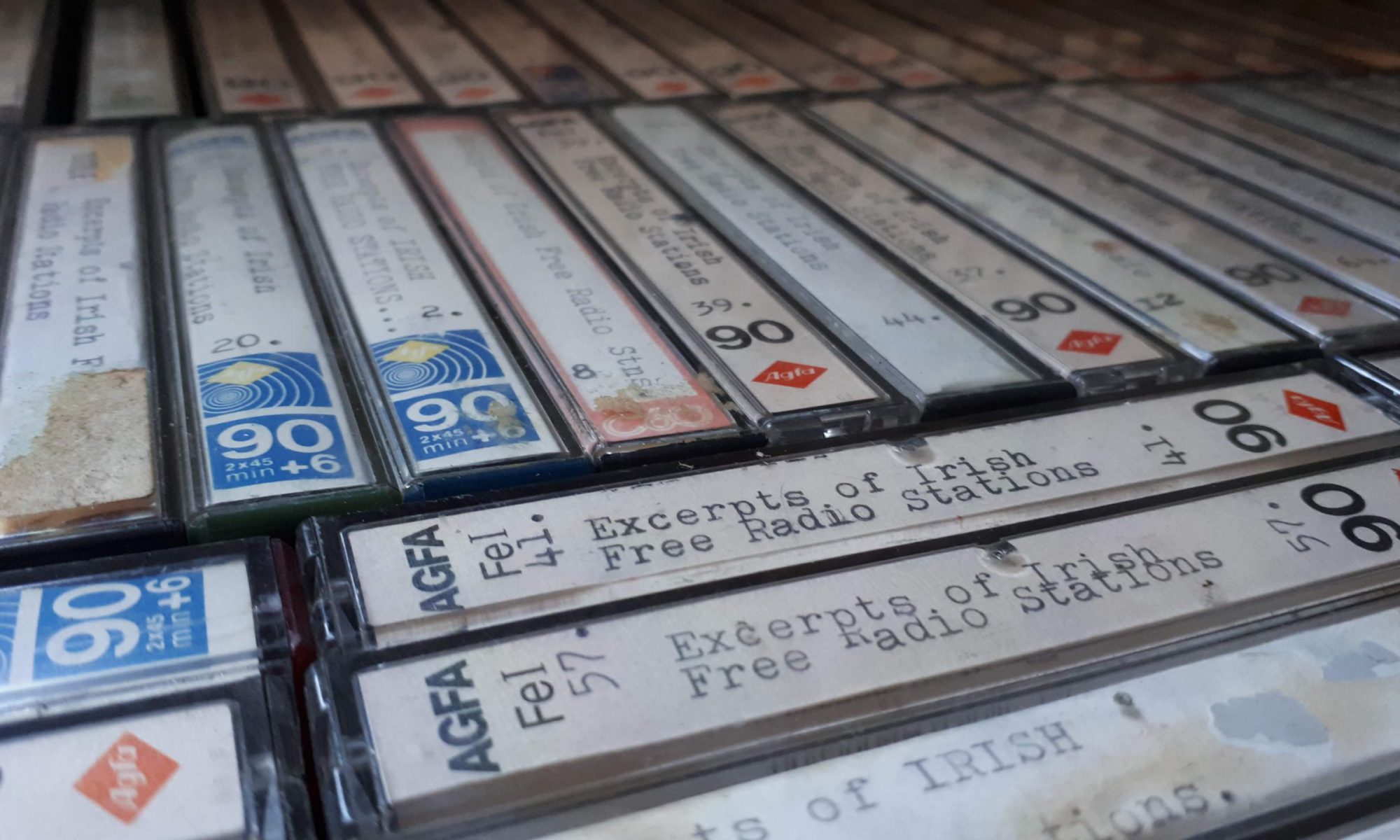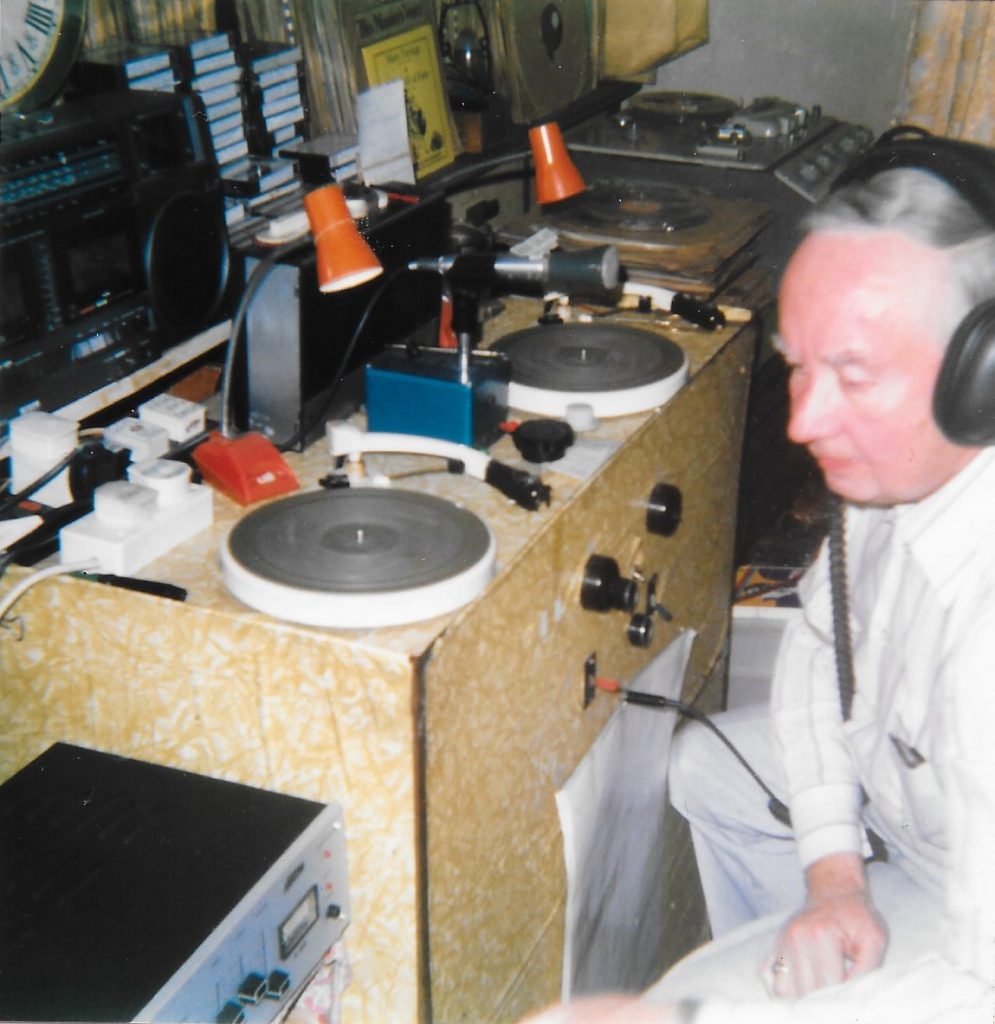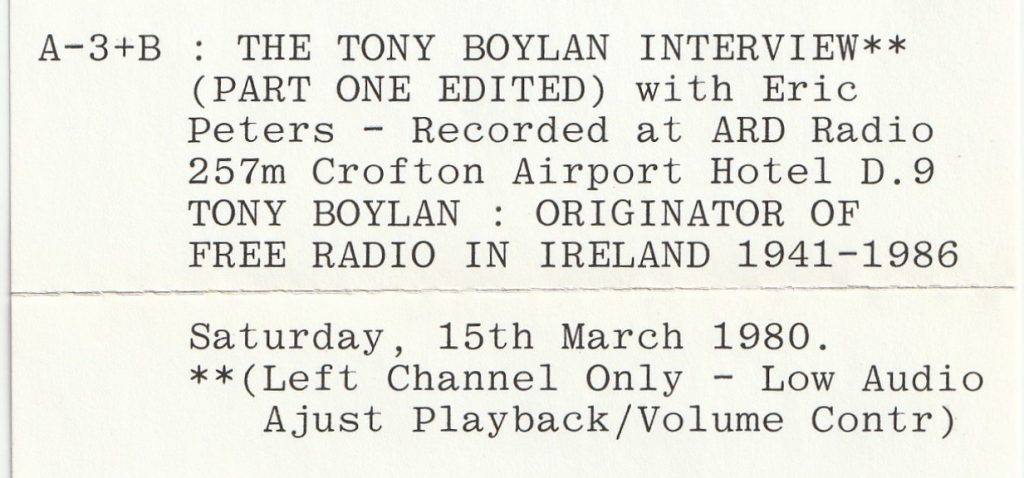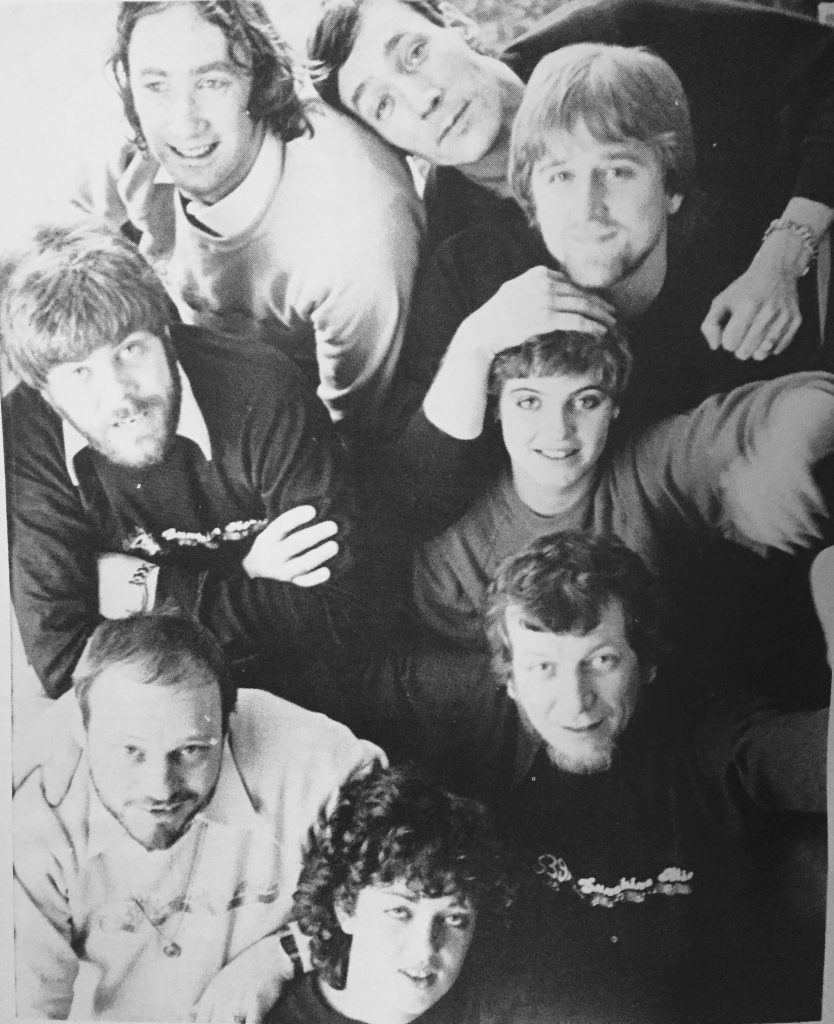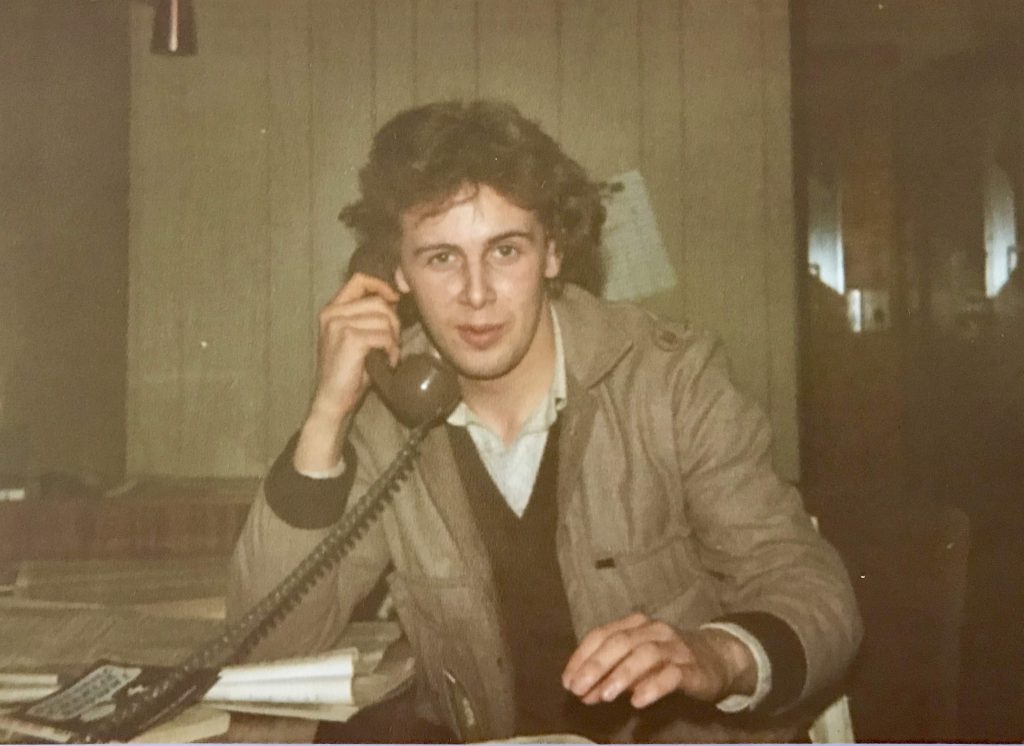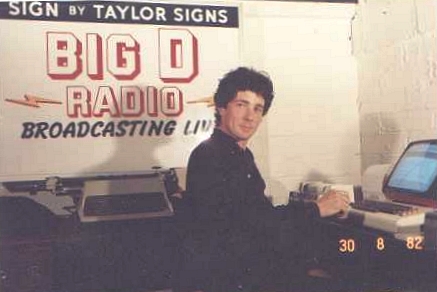Podcast: Play in new window | Download
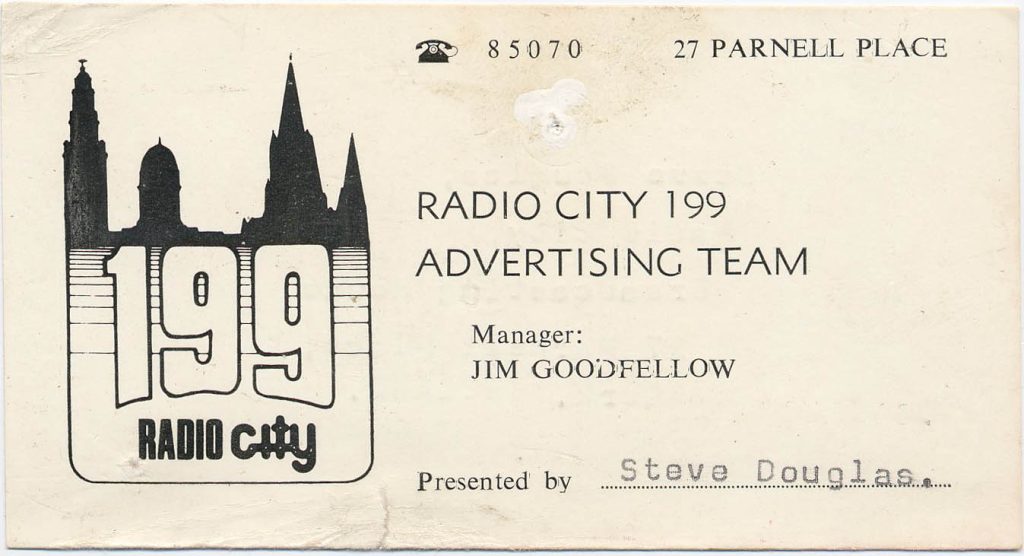
Radio City was an early pioneering Cork station founded in the summer of 1980 by two young radio anoraks in the city, Pete O’Neill (Pete Andrews on air) and Dan Noonan (Carl Johnston on air). The station broadcast on 1512 kHz AM and soon added FM, an innovation at the time. It lasted until 1982, by which time the larger and more professional stations ERI and South Coast Radio were making inroads in Cork city and county.
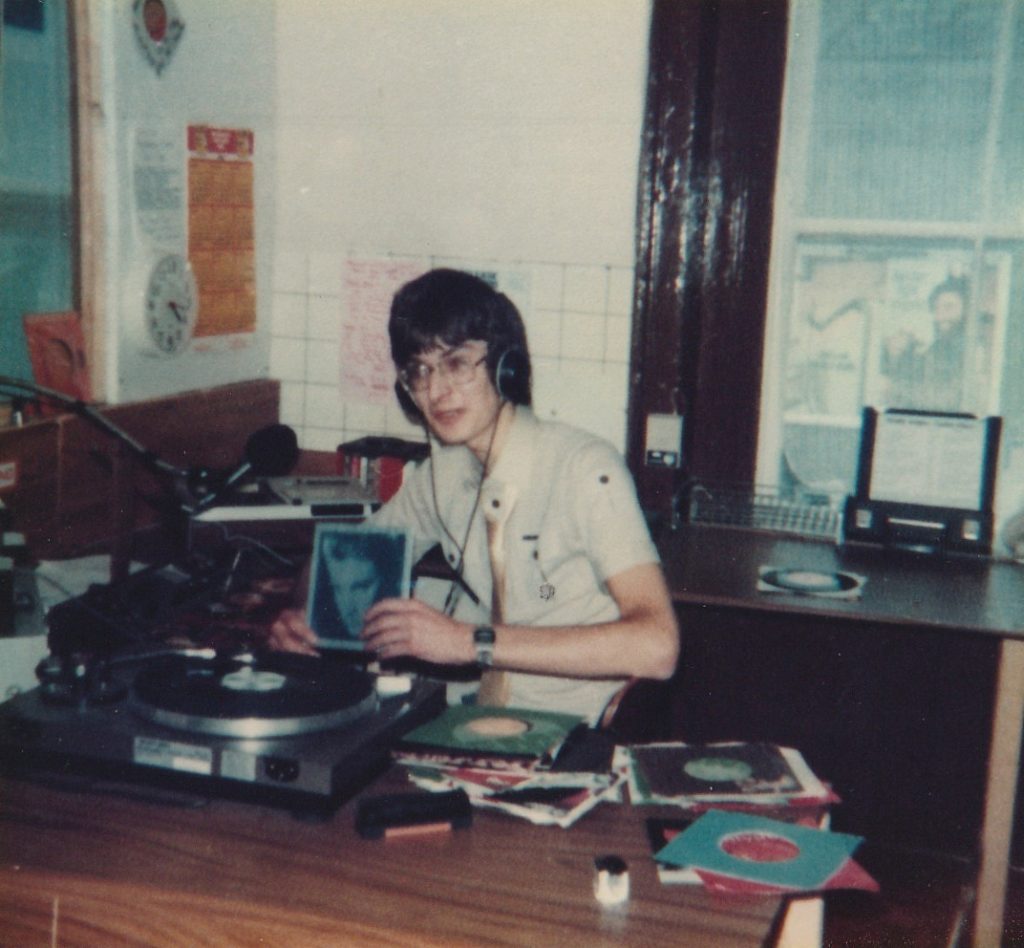
Pete O’Neill recalls the background to the establishment of Radio City:
I had just collected my Leaving Certificate Examination results and Dan was waiting outside in his Hiace van ready to look for a suitable premises. I had worked with Dan at CBC and did many regular discos for him. The premises were located at 27 Parnell Place and consisted of three floors above a sweet shop, which we called Broadcasting House. The station originally broadcast on 199 metres medium wave with the horizontal aerial running over several nearby buildings. The transmitter was supplied and installed by Con McParland who had previously done work for another early Cork pirate CBC.
Radio City was the first pirate in cork to broadcast on FM stereo on 95.5 MHz. The transmitter was built by Waterford engineer Egidio Giani and was in a biscuit tin! The Radio City logo, featuring two cathedrals, City Hall and the Shandon bells, was designed by the late Henry Condon (Alan Reid, later known as Henry Owens on air). Henry was also resident voice-over artist for commercials and I used to have to bribe him with a few pints each time before he would agree to voice them!
The station had many DJs, some from the previous stations CBC, CCLR and others. Apart from ourselves, these included Noel Evans, Tony Allan (a Cork guy, not the other Tony Allan of Radio Nova etc), Susan James, Pat O’Rourke (Smurf), Alan Reid, Paul Cassidy, Derry O’Callaghan, Mark Malone and a host of weekend presenters including John Ashford, Luke Ward and Steve Douglas. The station broadcast news every hour and had a strong local flavour, popular with a Cork audience.
I also remember donating my entire record collection to create a music library for the station and running through the city on a Friday with sales rep Peter Maher to collect advertising checks. These needed to be lodged by 3pm in order to pay the DJs their weekly wage! I also purchased a giant helium balloon and attached an earth wire, filled it and let it go out the rooftop Velux window with Chris Tyler, our then engineer! I thought it would increase our medium wave signal and it did but the following morning I arrived to find the balloon hanging off the roof tiles and earth wire all over Parnell Place. We also brought out a calendar with a group photograph of the DJs and each month displayed a local advertiser’s name – I’m not sure if a copy still exists! The Arcadia on the Lower Road used to run monthly Ska Nights at the time and Luke Ward interviewed many of the visiting bands. I remember meeting members of The Beat and Selector at the studios. The station was briefly taken over one Sunday afternoon by Ógra Shinn Féin members and a recording was played on air before they left peacefully!
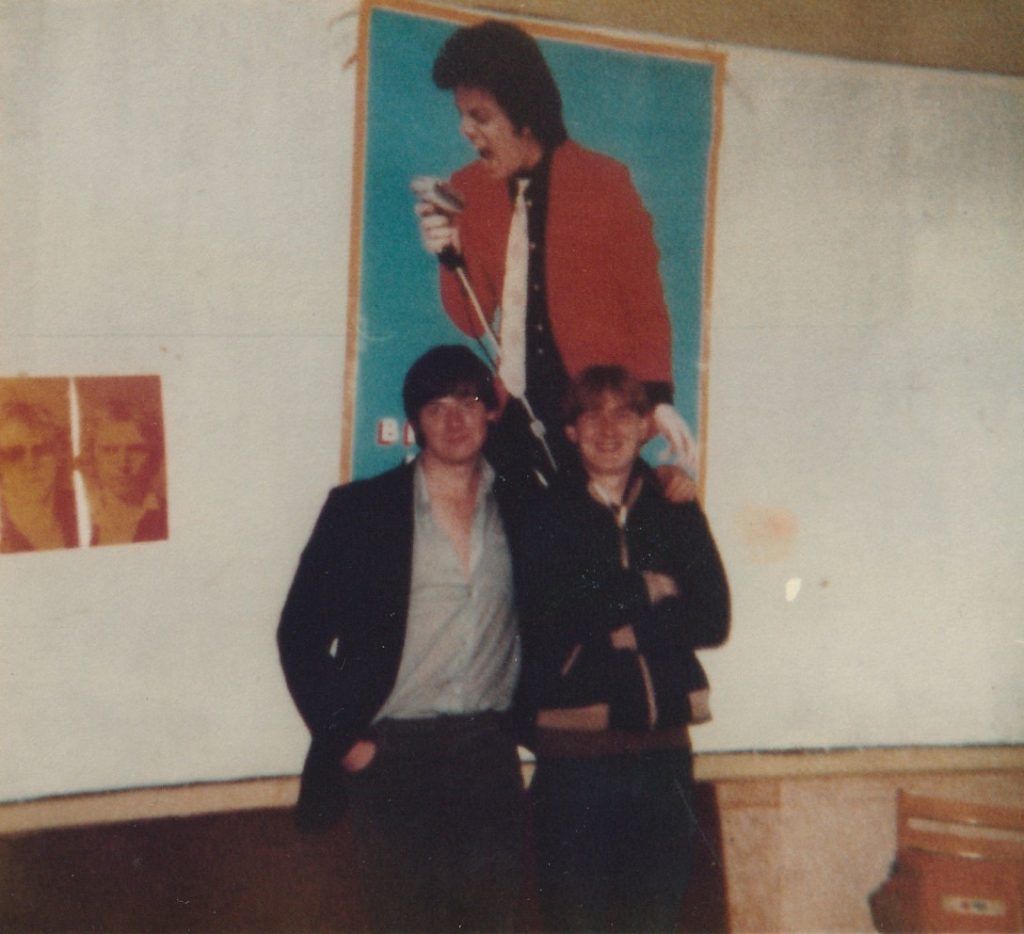
RTÉ broadcaster John Creedon was among the Radio City DJs, where he was known as Eric Hansen. In the history of Cork pirates, The Jolly Roger, another local DJ Ken Tobin said his first engagement with pirate radio was when he wrote to Eric Hansen in Radio City at the age of 15, saying that he was interested and would love to get involved. ‘I was invited in to the radio station and one of the first records I ever introduced on air – I was only at the station for about an hour – was The Nick Straker Band’s “A Walk in the Park”. It must have been around 1980. I knew then that it was all I wanted to do. Nothing else – I wanted to be part of radio. That guy Eric Hansen, funny enough, people might know him today as John Creedon’.
This is a recording of the launch of Radio City in 1980. It begins with continuous music for 17 minutes interspersed with short links announcing the 199 metres wavelength (1512 kHz). Singer Tony Stevens opens the station (and a bottle of celebratory champagne) and comments that it is up to RTÉ standards both in terms of premises and presenters. He is then interviewed by Pete Andrews, who says that Radio City aims to promote a lot of Irish music and more specialist tastes, rather than just contemporary chart hits. Recorded messages of support from other Irish singers are also aired and Pete is joined in studio later by other DJs including Karl Johnson (Dan Noonan), who was also Radio City’s managing director, and breakfast presenter Mike Cagney. Listeners are invited to write to the station at 27 Parnell Place in Cork.
The untimed recording was made on Sunday 31st August 1980 from 1512 kHz. Despite the passage of time and possible issues with transmission and recording equipment, audio quality is listenable. Thanks to Lilian O’Donoghue for the donation and to Ian Biggar for assistance with research.
